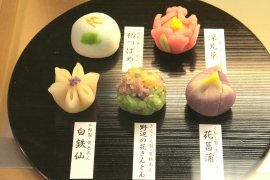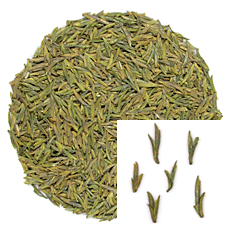
An interesting article by Jeff Gordinier appeared in today?s Dining & Wine section of the New York Times. It is titled: Mindful Eating as Food for Thought.
It presents the benefits of mindful eating ? that is, eating slowly ( not hoovering in the chow ) while paying attention to the food on your plate. Without the distraction of watching television or being connected to various electonica while eating.
For those who gobble their food in order to move on to the next thing, this notion may come as a surprise. Mindful eating is about focusing on the qualities and attributes of our food: the taste, the textures, and the interplay of flavors between the foods on your plate. Aromas and colors, too, are there to be appreciated, and who knows, such mindfulness might start many thinking about what the food on their plate actually is and where it came from.

According to the author, this concept has roots in Buddhist teachings. Just as there are forms of meditation that involve sitting, breathing, standing and walking, many Buddhist teachers encourage their students to meditate with food, expanding consciousness by paying close attention to the sensation and purpose of each morsel. In one common exercise, a student is given three raisins, or a tangerine, to spend 10 or 20 minutes gazing at, musing on, holding and patiently chewing.
?The rhythm of life is becoming faster and faster, so we really don?t have the same awareness and the same ability to check into ourselves,? said Dr. Cheung, who, with the Vietnamese Buddhist monk Thich Nhat Hanh, co-wrote ?Savor: Mindful Eating, Mindful Life.? ?That?s why mindful eating is becoming more important. We need to be coming back to ourselves and saying: ?Does my body need this? Why am I eating this? Is it just because I?m so sad and stressed out????
I was interested to see? such an article in the go-go New York Times. Not so long ago the Times was filled with reports and stories about the latest ?here-today- gone-tomorrow ?pop-up store, or roaming bar. So this article comes as a pleasant surprise.
We stress this same type of mindfulness about tea in our tea classes and whenever we are speaking with a tea customer who we think will listen.
Why? Because we are obsessed with the qualities that make premium artisan tea so special, and much of the appreciation of the flavor of the tea begins with the appreciation of the appearance of the tea itself. After all, one of the reasons that artisan tea is so great is because of the careful handling and hand-skills of the tea makers who made the tea.
So if you drink tea for the deliciousness of it, or for it?s cultural importance or its social opportunities ( and not just for a cafffeine jagg), perhaps you already look at the beauty of the leaves in the tea that you are purchasing or will be drinking. Do you ever wonder why certain leaf shapes are the way they are, or consider all of the different shade of color that tea can be?? Have you learned enough about the characteristics of some teas that you can? identify them just by looking at the shape and color? By the aroma?

This is our mantra about steeping and drinking a delicious cup of tea:? See, touch, hear, smell, taste.
We put that simple phrase, repeated below, on one of the handouts for our tea classes. We explain it, and some in attendance listen to us, and some don?t. Nevertheless, those who pay attention to their tea will, we believe, ultimately,? have a richer tea drinking experience, and gain a deeper appreciation for the craft of making and steeping.
Mindful tea drinking ? food for thought, indeed!
Tea Drinking Feeds All Five Senses
See: observe the color, shape, and size of the dried tea leaves, and then the color of the tea liquor in your cup
Smell: the aroma of the dried tea leaves before steeping and the aroma of the tea liquor in your cup
Hear: listen to the sound of the water being poured into the teapot and the tea liquor being poured into the cups
Touch: feel the smoothness or roughness of the teacup in your hand and against your lips. Admire the thin-ness of the lip and the curve at the base of the cup.
Taste: savor the sweetness or the bitterness of the tea liquor

Here is a link to the article in the New York Times:
http://www.nytimes.com/2012/02/08/dining/mindful-eating-as-food-for-thought.html?ref=dining
Advertisement
Like this:
Be the first to like this post.
Source: http://teatrekker.wordpress.com/2012/02/09/mindful-tea-drinking-as-food-for-thought/
rose bowl 2012 nfl playoff picture nfl playoff picture ryan seacrest
No comments:
Post a Comment
Note: Only a member of this blog may post a comment.